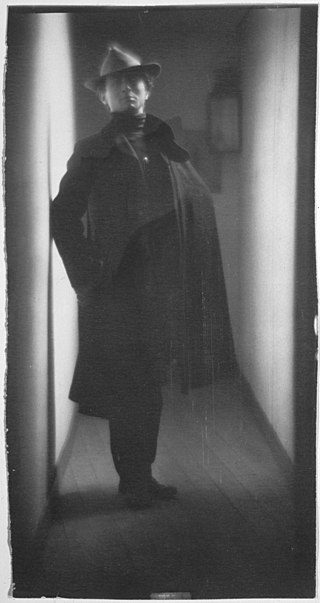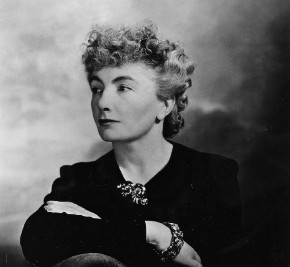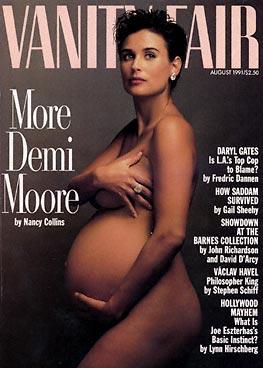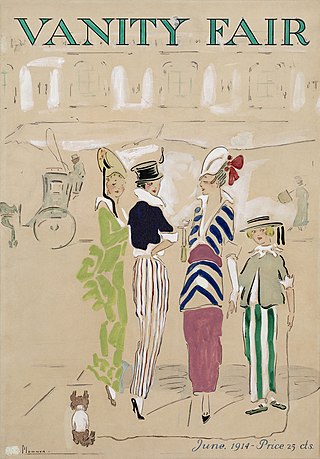Vanity Fair is an American monthly magazine of popular culture, fashion, and current affairs published by Condé Nast in the United States.
Vogue U.S., also known as American Vogue, or simply Vogue, is a monthly fashion and lifestyle magazine that covers style news, including haute couture fashion, beauty, culture, living, and runway. It is part of the global collection of Condé Nast's VOGUE media.

Edward Jean Steichen was a Luxembourgish American photographer, painter, and curator, renowned as one of the most prolific and influential figures in the history of photography.

Mario Eduardo Testino Silva OBE HonFRPS is a Peruvian fashion and portrait photographer.

Patrick Demarchelier was a French fashion photographer.

Antoinette Frissell Bacon, known as Toni Frissell, was an American photographer, known for her fashion photography, World War II photographs, and portraits of famous Americans, Europeans, children, and women from all walks of life.
Steven Meisel is an American fashion photographer, who obtained popularity and critical acclaim with his work in Vogue and Vogue Italia as well as his photographs of friend Madonna in her 1992 book, Sex. He is now considered one of the most successful fashion photographers in the industry. He used to work regularly for both US and Italian Vogue, and W and now exclusively for British Vogue.

Hana Soukupová is a Czech model. She has participated in the Victoria's Secret Fashion Shows and modelled for the Victoria's Secret catalog.

Carmel Snow was the editor-in-chief of the American edition of Harper's Bazaar from 1934 to 1958; and the chair of the magazine's editorial board. She was famously quoted as saying, "Elegance is good taste, plus a dash of daring".

The Gazette du Bon Ton was a small but influential fashion magazine published in France from 1912 to 1925. Founded by Lucien Vogel, the short-lived publication reflected the latest developments in fashion, lifestyle and beauty during a period of revolutionary change in art and society. Distributed by Condé Nast, the magazine was issued as the Gazette du Bon Genre in the USA. Both titles roughly translate as "Journal of Good Taste" or "Journal of Good Style."

Nude photography is the creation of any photograph which contains an image of a nude or semi-nude person, or an image suggestive of nudity. Nude photography is undertaken for a variety of purposes, including educational uses, commercial applications and artistic creations.

More Demi Moore or the August 1991 Vanity Fair cover was a controversial handbra nude photograph of then seven-months pregnant Demi Moore taken by Annie Leibovitz for the August 1991 cover of Vanity Fair to accompany a cover story about Moore.

Anna-Lou Leibovitz is an American portrait photographer best known for her portraits, particularly of celebrities, which often feature subjects in intimate settings and poses. Leibovitz's Polaroid photo of John Lennon and Yoko Ono, taken five hours before Lennon's murder, is considered one of Rolling Stone magazine's most famous cover photographs. The Library of Congress declared her a Living Legend, and she is the first woman to have a feature exhibition at Washington's National Portrait Gallery.
Frédéric Lagrange is a fashion, travel, portrait, and lifestyle photographer.

Vanity Fair was an American society magazine published from 1913 to 1936. It was highly successful until the Great Depression led to its becoming unprofitable, and it was merged into Vogue in 1936. In the 1980s, the title was revived.

Madrid Fashion Film Festival (MadridFFF) was the first annual fashion film festival held in Madrid, Spain, which showcases films related to the world of fashion. The festival was held at Palacio de Comunicaciones Cibeles. It was created in 2013, to showcase annual fashion films made by both professionals and new creators within the fashion industry.
Sarajane Hoare is a British fashion journalist, director, and stylist who, since the 1980s has worked for British Vogue, Vanity Fair, and Harper's Bazaar. She has been instrumental in developing the career of photographer Herb Ritts, shoe designer Tamara Mellon, and journalist Kate Phelan.

Cathleen Naundorf is a contemporary artist and fine art photographer. She lives in Paris and London.

Stephanie Pfriender Stylander is an American fashion and entertainment portrait photographer.
Constantin Joffé (1910–1992) was a Russian / French / American fashion and advertising photographer who worked for the magazines Vogue and Glamor in the 1940s and 1950s, during their period of widest circulation.




















